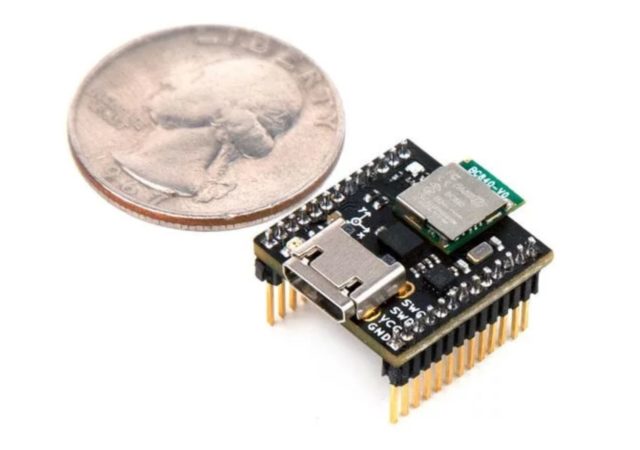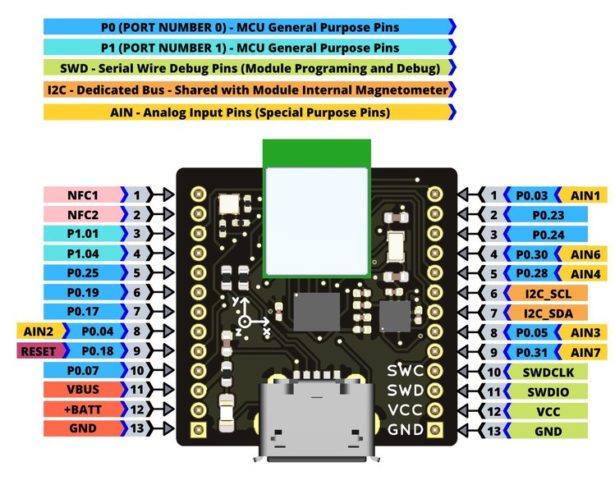Tensor Iotera Group (TIG), an Israeli based technology company, has launched a powerful IoT development board featuring motion sensing called Bluetera II and supporting Google Protocol buffers.
Bluetera II came from the idea that developing an IoT application shouldn’t be complicated. Hardware is hard, and scaling for manufacturing might also be more daunting than initially anticipated. So instead of going through those troubles, why don’t you go the route of something that works, and most importantly, is scalable, as TIG is advocating with their Bluetera IoT development platform.
Bluetera II is the 2nd generation of this IoT platform. The Bluetera II board is equipped with a 9-axis motion sensor, Bluetooth 5 enabled Nordic nRF52840 SoC core, which features an Arm Cortex-M4 FPU, with 1MB of Flash, 256KB of RAM, and lastly, an SDK based on Google’s Protocol Buffer (protobuf) technology. The device can function as a BLE Central (Master) and a BLE Peripheral (Slave). The hub can be connected to a Linux or a Windows-based USB port as a BLE dongle. It can then become a master of the Bluetera LAN interacting with multiple Bluetera hub modules.

Google’s Protocol Buffers (often shortened to Protobuf) is a language-neutral, platform-neutral, extensible mechanism for serializing structured data. For Bluetera II, we use Protobuf to quickly add both uplink and downlink messages, which allows developers to focus on business logic instead of boilerplate code.
Bluetera II isn’t just your everyday IoT development board, and it goes more than that. Although the Bluetera II is mostly targeted to motion-based IoT applications, it can be expanded for other features using its expanded GPIO ports. The Bluetera platform offers a full-stack development platform comprised of 3 main elements:
- A tiny Blueterra II prototyping sensor board to collect and analyze data.
- Wireless communication to create a link between the digital and physical side.
- SDK for major operating systems to build their own software. The SDK is compatible with Linux, Android, iOS, and Windows. It also includes a plugin for the Unity 3D development platform.
Bluetera II is an open hardware initiative, and the source code, hardware designs, SDKs are fully open. Bluetera’s firmware uses the Madgwick sensor fusion algorithm, which transforms acceleration, gyro, and magnetometer data into quaternion rotation measurements. The Bluetera II board itself includes a female JST connector that accommodates an external Lithium-Ion battery, a micro USB connector, battery charging circuitry, and several GPIOs options. Its 13-pin headers provide supports for PWM, SWD, UART, I²C, ADC, and more.

Bluetera II’s range is greatly affected by your choice of the BLE module. The BC840M gets a range of up to 135 meters at 1Mbps, the smaller BC840 is limited to 4 meters at 1Mbps, while the BC840E combined with ANT060 antenna can transmit/receive data up to 850 meters at 1Mbps, and up to 3400 meters at 125 kbps.
The board is currently being crowdfunded on Crowd Supply, starting at $50 for the development board with options for add-ons. A developer edition is also available for $70, which includes a debug expansion board, complete with headers and connectors.
More information is available on the crowd supply and the product page. Further information about the module schematics, SDK, the firmware is available in their GitHub repository.

I enjoy writing about the latest news in the areas of embedded systems with a special focus on AI on edge, fog computing, and IoT. When not writing, I am working on some cool embedded projects or data science projects. Got a tip, freebies, launch, idea, gig, bear, hackathon (I love those), or leak? Contact me.
Support CNX Software! Donate via cryptocurrencies, become a Patron on Patreon, or purchase goods on Amazon or Aliexpress




